We have compiled a list of important figures in Japanese history, such as Oda Nobunaga, Toyotomi Hideyoshi, and Tokugawa Ieyasu! We introduce their great achievements, lives, and even causes of death. If you'd like to learn more, check out the detailed articles through the links for each individual.
*If you purchase or book any products mentioned in this article, a portion of the sales may be returned to FUN! JAPAN.
Oda Nobunaga
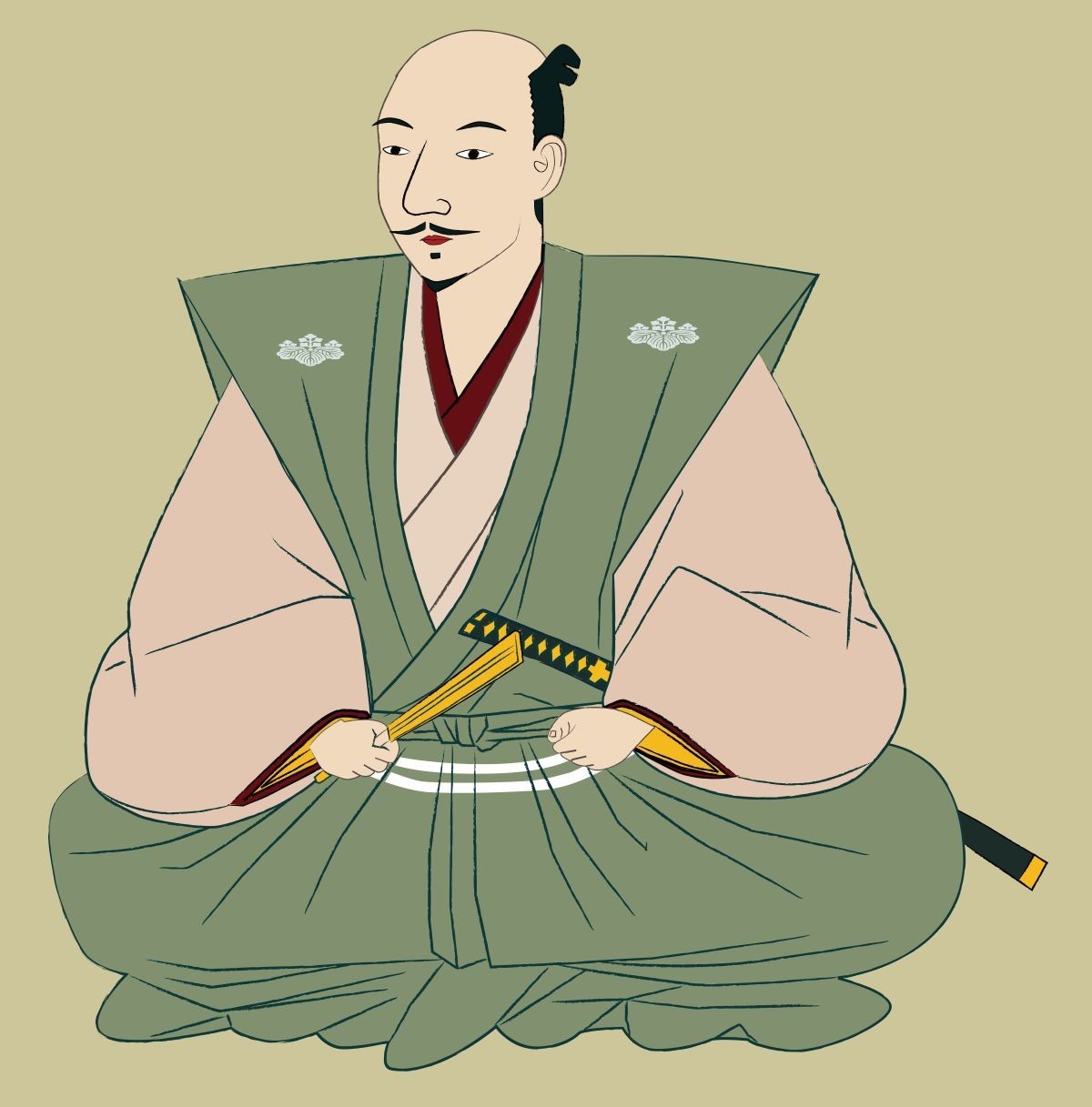
Oda Nobunaga was born nearly 500 years ago, in 1534, in Owari Province (modern-day Aichi Prefecture) as the son of Oda Nobuhide. His life, which ended in 1582, can be divided into three key stages: Youth, Achievements in Life, and Final Days.
Nobunaga's Youth: Why He Was Called a "Fool"
Stories of Nobunaga’s younger years are preserved in Shinchō-kōki, a historical account written by Ota Gyuichi, a vassal who served Nobunaga closely. According to this source, young Nobunaga had a penchant for unusual clothing and exhibited what could be described as “unbecoming behavior,” as illustrated by the following passage (pages 56–58):
When passing through the streets, he would eat chestnuts and persimmons without hesitation, even biting into gourds. He would stand in the middle of the town eating rice cakes, lean on others, and cling to their shoulders as he walked. In those days, when society valued proper etiquette, people had no choice but to call him a 'fool.' (Shinchō-kōki: A Primary Historical Source of the Sengoku Warlord by Hirohiro Wada, Chuokoron-Shinsha, 2018)
It’s clear that Nobunaga’s bold and unrestrained behavior stood out, especially in a time when strict decorum was expected. Considering this, it’s no surprise that onlookers labeled him as a "fool."
Nobunaga’s Major Achievements: The Battle of Okehazama, The Overthrow of the Muromachi Shogunate, and The Battle of Nagashino
After the death of his father, Nobuhide, in 1552, Nobunaga succeeded as head of the Oda clan. In 1560, Imagawa Yoshimoto, a powerful warlord ruling Suruga (present-day Shizuoka Prefecture), Totomi (also Shizuoka), and Mikawa (Aichi Prefecture), launched an invasion into Owari Province. Nobunaga’s forces, though outnumbered, ambushed the Imagawa army, which was resting on a small hill called Mount Okehazama. The Oda forces successfully struck down Yoshimoto and took his head. This decisive victory on May 19, 1560, known as the Battle of Okehazama, catapulted Nobunaga’s name into nationwide prominence.
In 1568, Nobunaga accompanied Ashikaga Yoshiaki to Kyoto. Yoshiaki was a member of the Ashikaga family, which had produced the 12th and 13th Shoguns of the Muromachi Shogunate. Dissatisfied with his cousin Yoshihide becoming the 14th Shogun, Yoshiaki sought support from powerful daimyo to claim the position for himself. With Nobunaga's backing, Yoshiaki became the 15th Shogun, but Nobunaga effectively wielded real political power through the Shogunate. In 1573, after defeating Yoshiaki in battle, Nobunaga ousted him from Kyoto, effectively ending the Muromachi Shogunate.
In 1575, Tokugawa Ieyasu, who would later establish the Edo Shogunate, sought Nobunaga’s help when one of his castles came under siege. Nobunaga responded by employing an innovative strategy: he constructed triple fortifications and divided his firearm troops into three groups, creating a three-line volley firing system. This tactic decisively defeated the enemy cavalry forces in what became known as the Battle of Nagashino.
*This section is primarily based on pages 22–25 of Oda Nobunaga: A Warlord Who Raced Through the Sengoku Era (Minerva Japanese Historical Biography Series), supervised by Tetsuo Owada, written by Keisuke Nishimoto, and illustrated by Katsuya Hirose, Minerva Shobo, 2010.
👉Read books about Oda Nobunaga.(Yahoo!shopping)
Nobunaga’s Final Days: The Incident at Honnoji
Despite his unstoppable rise, Nobunaga’s remarkable life came to an abrupt end when he was forced to take his own life. This event is known as the "Incident at Honnoji."
In 1582, Nobunaga was en route to Bitchu Province (present-day Okayama Prefecture) to attack the Mori clan, who controlled the Chugoku region. On his way, he stopped at Honnoji Temple in Kyoto. However, he was betrayed by one of his retainers, Akechi Mitsuhide, and compelled to end his life there (Oda Nobunaga: A Warlord Who Raced Through the Sengoku Era, p. 25). The exact reason for Mitsuhide’s betrayal remains shrouded in mystery, described as one of "the greatest mysteries in Japanese history" (Akechi Mitsuhide and the Incident at Honnoji, Daimon Watanabe, Chikuma Shobo, 2019, p. 7).
As the term "mystery" suggests, Mitsuhide and the "Incident at Honnoji" have long been topics of debate among historians. While this article will not delve further into this topic, those interested may want to explore books about the "Incident at Honnoji" available at libraries or bookstores.
👉The Life and Famous Quotes of "Oda Nobunaga": Who Was He and What Was He Like?
Toyotomi Hideyoshi
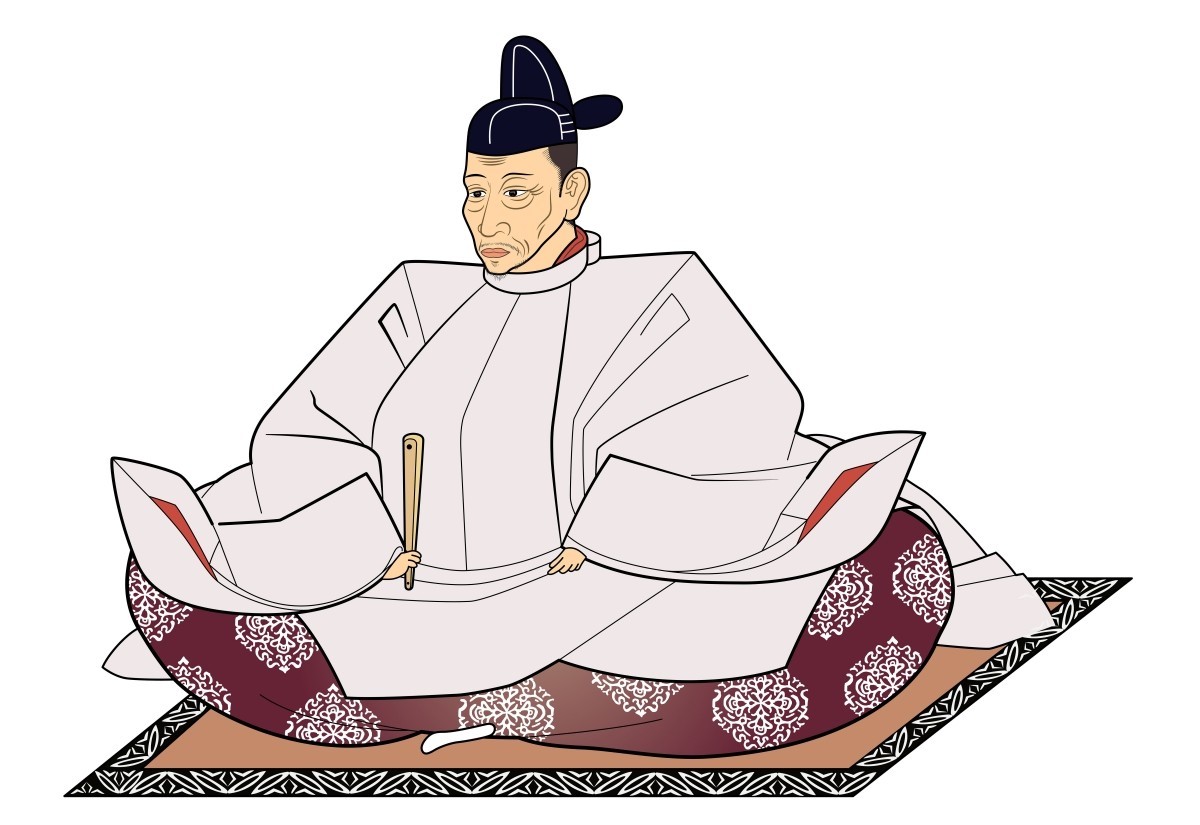
Let’s take a closer look at the life of Toyotomi Hideyoshi (The information below is primarily based on "Toyotomi Hideyoshi: The Path to National Unification" [Yonde Shirabete Jidai ga Wakaru Minerva Nihon Rekishi Jinbutsuden], supervised by Tetsuo Owada, written by Keisuke Nishimoto, illustrated by Kunihiko Aoyama, Minerva Shobo, 2010).
Hideyoshi’s Early Life: Wandering, Meeting Nobunaga, and Warming Sandals in His Bosom
Toyotomi Hideyoshi was born in 1537 (or 1536, according to some sources) in Owari Province (modern-day Aichi Prefecture) as the son of a farmer. As a child, he was sent to live at a temple and later worked as an apprentice at a rice shop and a blacksmith's shop. However, none of these positions lasted long. At the age of 15, he reportedly sold cotton needles door-to-door. Eventually, he returned to his hometown, where a childhood friend introduced him to Oda Nobunaga, who would become his lord.
A famous story from Hideyoshi's time as a sandal bearer (a servant responsible for preparing and carrying sandals for their master’s outings) illustrates his attentiveness and resourcefulness. One winter day, wanting to ensure that Nobunaga could wear warm sandals, Hideyoshi placed them inside his bosom to warm them. When Nobunaga tried on the sandals, he initially misunderstood, believing Hideyoshi had been sitting on them. Nobunaga scolded him, but upon learning the truth, he was deeply impressed by Hideyoshi’s thoughtfulness. From that day on, Nobunaga affectionately referred to him as "Saru" (monkey) and took a liking to him. This act of consideration and genuine effort to please his master won Nobunaga's trust, setting Hideyoshi on the path to a meteoric rise under Nobunaga's command.
What Toyotomi Hideyoshi Achieved: National Unification, the Taikō Land Survey, and the Sword Hunt Edict
After joining Oda Nobunaga's service, Toyotomi Hideyoshi distinguished himself in battle and quickly rose through the ranks. Within 20 years, he advanced to the position of a feudal lord ("daimyō"). In 1582, when Nobunaga was betrayed by Akechi Mitsuhide and forced to take his own life during the "Incident at Honnō-ji," Hideyoshi avenged his lord by defeating Mitsuhide. At the time, Nobunaga had been working toward "national unification," aiming to end the internal strife and create a single, unified nation. Following Nobunaga's death, Hideyoshi carried on his mission and achieved the long-cherished goal of unification in 1590 by subduing the Hōjō clan at Odawara Castle (Kanagawa Prefecture) and the northern regions of Tōhoku.
Among Hideyoshi's well-known policies are the "Taikō Land Survey" and the "Sword Hunt Edict." The Taikō Land Survey, conducted on a large scale between 1582 and 1598, was a comprehensive survey to measure land area and determine rice yields. Before this, measurement standards varied widely, so Hideyoshi standardized them nationwide to accurately assess the potential rice harvest. Incidentally, the term "Taikō" refers to the honorary title given to Hideyoshi.
The Sword Hunt Edict was a decree aimed at confiscating weapons from farmers. During the Sengoku period, many farmers had weapons because they sometimes fought as soldiers. By enforcing the edict and taking weapons from farmers, Hideyoshi clearly distinguished the roles of the "samurai, who wielded weapons and ruled," and the "farmers, who paid taxes."
👉What Kind of Person Was Toyotomi Hideyoshi? His Life, Later Years, Famous Quotes, and Cause of Death
Tokugawa Ieyasu

Tokugawa Ieyasu was the man who, during Japan's Sengoku (Warring States) and Azuchi-Momoyama periods, completed the program to unify the country after the civil wars. This program was initiated by the warlord Oda Nobunaga and later taken over by Toyotomi Hideyoshi. Ieyasu achieved this by establishing the Edo Shogunate, laying the foundation for an unprecedented era of peace and stability in Japanese history. The process of unification is often compared to making rice cakes, as expressed in this famous haiku:
"Oda pounds the rice, Toyotomi kneads the dough, And Tokugawa eats the finished cake without lifting a finger."
*This haiku humorously conveys that Oda Nobunaga did the hard work of pounding the rice, Toyotomi Hideyoshi shaped it, and Tokugawa Ieyasu, without much effort, sat back and enjoyed the result.
The Life of Tokugawa Ieyasu
Let’s begin by exploring the life of Tokugawa Ieyasu, following it step by step. The following details are summarized from "Tokugawa Ieyasu: The Shogun Who Established the Edo Shogunate" (supervised by Manabu Oishi, written by Keisuke Nishimoto, illustrated by Tomomi Miyajima, Minerva Shobo, 2010).
Tokugawa Ieyasu's Childhood and Youth: A Hostage to Other Daimyo Clans
Tokugawa Ieyasu was born in 1542 as the eldest son of the Matsudaira clan, a ruling family of Mikawa Province (present-day Aichi Prefecture), at Okazaki Castle. At the time, the Matsudaira clan was surrounded by two powerful daimyo families, the Imagawa to the east and the Oda to the west. As a result, from the age of six, Ieyasu was sent as a hostage to the Oda clan, and at the age of eight, he was transferred to the Imagawa clan, where he spent his childhood.
A turning point came for Ieyasu at the age of 19. When Imagawa Yoshimoto was defeated by Oda Nobunaga in the Battle of Okehazama, Ieyasu was able to break free from the Imagawa clan and ended his life as a hostage. In January 1562, Ieyasu formed an alliance with Oda Nobunaga at Kiyosu Castle (Aichi Prefecture), and by 1566, he had changed his family name from Matsudaira to Tokugawa.
Tokugawa Ieyasu Establishes the Edo Shogunate: Conflicts with Toyotomi Hideyoshi and the Battle of Sekigahara
In 1582, Oda Nobunaga, who had been striving for the unification of Japan, was attacked by his vassal Akechi Mitsuhide in the Incident at Honnō-ji and took his own life. Afterward, another vassal, Toyotomi Hideyoshi, defeated Akechi Mitsuhide and succeeded Nobunaga's mission. In 1584, the Battle of Komaki and Nagakute took place between Ieyasu and Hideyoshi, but it ended without a clear resolution, leading to Ieyasu reconciling with Hideyoshi and pledging his loyalty to him. In 1590, Ieyasu moved to Edo (modern-day Tokyo), a new domain granted to him by Hideyoshi, and took residence in Edo Castle.
After unifying the country, Hideyoshi passed away in 1598. Following his death, a conflict arose between Ieyasu and Ishida Mitsunari, who sought to take control and support Hideyoshi's heir, Hideyori. This led to the Battle of Sekigahara in 1600, a decisive conflict often referred to as the "battle for the fate of the nation." The daimyos of Japan were divided between Ieyasu's Eastern Army and Mitsunari's Western Army. Ultimately, Ieyasu's Eastern Army emerged victorious.
The Later Years of Tokugawa Ieyasu: Establishing the Edo Shogunate
After his victory at Sekigahara, Ieyasu was appointed Shogun in 1603 and formally established the Edo Shogunate in Edo. As Shogun, he commanded the daimyos to transform Edo into a fitting castle town for the Shogunate. Land reclamation projects from the sea and marshlands were undertaken, and the daimyos built their residences around Edo Castle, turning Edo into a massive city. In 1604, Ieyasu began developing national roads, including the Tōkaidō, and established post towns along the routes. He also set up checkpoints to strictly monitor travelers for security purposes.
In 1605, Ieyasu handed over the title of Shogun to his third son, Hidetada, and retired to Sunpu Castle (in present-day Shizuoka Prefecture), where he continued to hold significant influence as "Ōgosho" (Retired Shogun). However, fearing that Hideyori would attempt to reclaim power, Ieyasu launched the Winter Campaign of Osaka in 1614 and the Summer Campaign of Osaka in 1615, leading to the destruction of the Toyotomi clan. After the Summer Campaign, Ieyasu implemented several policies, such as the "One Castle Per Province Law," which limited each domain to only one castle, and the "Buke Shohatto," a set of laws regulating the conduct of the daimyos.
Ryoma Sakamoto
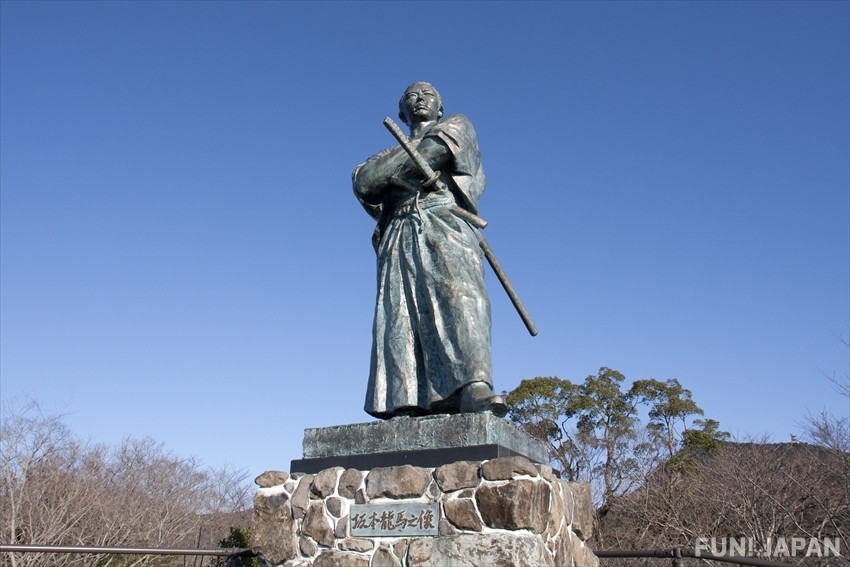
Born in 1836 and dying at the age of just 31, Sakamoto Ryoma's life was short but eventful. Born in Tosa, which is now Kochi Prefecture in Shikoku, Ryoma was relatively wealthy because his family ran a kimono business and a sake brewing business, and he learned swordsmanship from his teenage years. After that, he continued his swordsmanship training in Edo (now Tokyo) and returned to Tosa regularly.
Ryoma, who had for a time joined the Tosa Jinō Party, a group of the Emperor Shōyō faction that sought to overthrow the Shogunate, later returned to Edo and joined another group with similar ideas. In a cinematic plot, Ryoma plotted to assassinate Katsu Kaishu, a key figure in the Shogunate. However, as a result, he was admonished by Kaishu about the world situation and the necessity of the Navy, and he became his apprentice on the spot, eventually becoming the head of the Kobe Naval School. In 1866, Ryoma succeeded in forming the Satsuma League by joining forces with the Satsuma clan (present-day Kagoshima), which sought to reform the shogunate, and the Choshu clan (present-day Yamaguchi), which advocated a radical doctrine of breaking the treaty.
The death of Ryoma Sakamoto and his influence on future generations
Ryoma compiled an eight-point proposal for the modernization of Japan (Funaka Eight Measures), in which he advocated the return of power to the emperor. This proposal was submitted to the shogun, Tokugawa Yoshiki, who returned to power in 1867. These eight articles became the foundation for a number of reforms during the Meiji period (1868~1912).
However, Ryoma did not see the fruits of his labor, and in 1867, on his birthday, November 15, he was assassinated at a ryokan in Kyoto. The perpetrators arrived at around 8 p.m. and attacked the moment the former wrestler's bodyguard turned their backs, killing Ryoma and his friend. Initially, Shinsengumi member Hojiro Oishi was executed as the culprit, but Nobuo Imai, a former member of the Kyoto Mishiro-gumi, also confessed to the crime. There are other theories, such as the Satsuma clan mastermind theory and the Shinsengumi crime theory, but it is still unclear who the real culprit was.
After Ryoma's death, his comrades Choshu, Satsuma, and Tosa clans united to fight the Shogunate side in the Boshin War. This war was also called the largest civil war in Japan's modern history, and more than 8,000 soldiers lost their lives in about one and a half years. In the end, the new government side won, and Japan chose the path of modernization based on Ryoma's proposal, rather than excluding foreign countries.
In recent years, Kochi Prefecture has named the prefecture's airport "Kochi Ryoma Airport" as a proud local great.
Abe no Seimei

Abe no Seimei (921–1005) was an Onmyoji who lived during the Heian Period and became a historical figure shrouded in legend. Specializing in magic, divination, and astronomy, he is often depicted commanding "shikigami" (spiritual familiars) in classical literature such as "The Great Mirror" and "Konjaku Monogatari Collection." Shikigami are said to be spirits or deities that serve Onmyoji, invisible to human eyes or able to transform their appearance. Abe no Seimei was renowned for his mastery over shikigami, which he used not only for curses but also for everyday tasks such as securing doors and managing household chores.
Abe no Seimei began his formal studies in astronomy and calendrical science at the Onmyoryo (Bureau of Onmyo) at the age of 39. He first appeared as an Onmyoji in the historical chronicle "Honcho Seiki" at age 46 and later as an expert of astronomy in diaries written by aristocrats when he was 51. His career, marked by late bloom and exceptional accomplishments, lasted until his death at the age of 84.
Over his long career, Abe no Seimei left behind numerous achievements, particularly in divination and exorcism. One notable story is his diagnosis of Emperor Kazan's persistent headaches. Seimei identified the cause as the skull from the emperor's past life, which had become lodged between rocks. After locating and retrieving the skull and relocating it to an open area, the emperor's headaches ceased. Another famous episode from his later years involved a successful rainmaking ritual, which earned him a reward from the emperor, as recorded in noble diaries of the time.
👉 Buy Abe no Seimei-themed products (Yahoo! Shopping)
👉What is an Onmyoji? Who Was Abe no Seimei from "Onmyoji 0"?
Shinsengumi
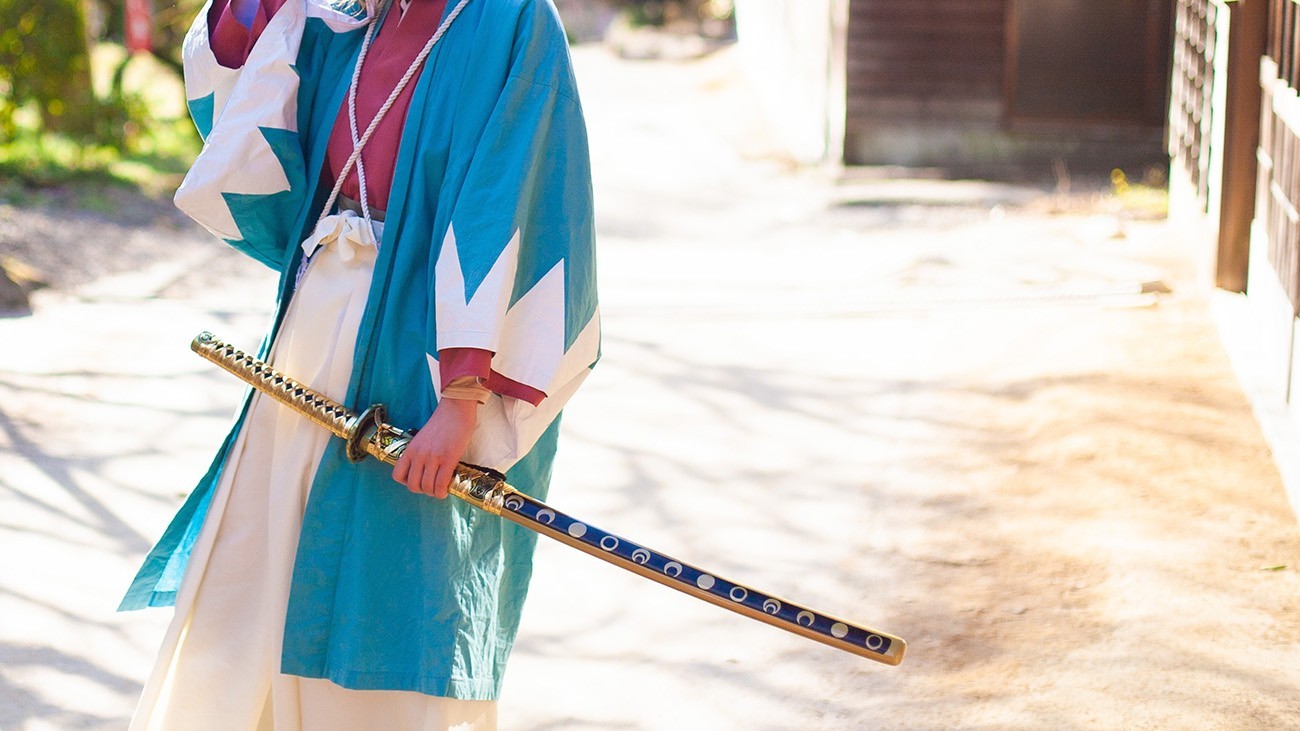
The era known as the Bakumatsu began in 1853 (Kaei 6) with the arrival of the "Black Ships"—American vessels led by Commodore Perry demanding Japan to open its borders after centuries of isolation.
This sparked a surge of loyalty toward the emperor and anti-foreign sentiment, known as the Sonnō Jōi ("Revere the Emperor, Expel the Barbarians") movement, which gained momentum in Kyoto. The movement led to a series of assassinations of shogunate officials who were perceived as favoring open trade with foreign nations, plunging Kyoto into chaos.
To restore order, a group was formed that later became the Shinsengumi. Initially, they were recruited under the name "Rōshigumi" (a group of masterless samurai) to escort the 14th Shogun, Tokugawa Iemochi, from Edo (modern-day Tokyo) to Kyoto
The Formation and Role of the Shinsengumi
Key figures like Kondō Isami and Hijikata Toshizō, members of the Tennen Rishin-ryū swordsmanship school, answered the call to join the Rōshigumi. Tennen Rishin-ryū was a lesser-known school based in the Tama region of western Tokyo, often ridiculed as a "country bumpkin style." Alongside them, approximately 300 individuals, including monks, gangsters, and townsfolk with notable combat skills, gathered in Edo.
However, upon reaching Kyoto, the group split due to ideological differences. The leader of the Rōshigumi harbored Sonnō Jōi beliefs, which clashed with others in the group. Kondō, Hijikata, and their faction stayed in Kyoto, coming under the protection of the Aizu Domain, whose daimyo was tasked with safeguarding Kyoto.
They established their base in Mibu Village and were called the "Miburo" (Wolves of Mibu) by locals, who both feared and respected them.
In 1863 (Bunkyū 3), they took part in the "August 18 Coup," a military operation that expelled Sonnō Jōi loyalists from Kyoto. Their success earned them the name Shinsengumi, bestowed by the Imperial Court. Despite their military achievements, their primary duty remained patrolling Kyoto to maintain public order—a role similar to that of a modern-day police force.
Connection to Samurai Culture
The Shinsengumi became widely recognized through their involvement in the "Ikedaya Incident" of 1864 (Genji 1). This was a pivotal event where they thwarted a terrifying plot by the Sonnō Jōi faction to set Kyoto ablaze. That same year, they participated in the "Kinmon Incident," where the Chōshū Domain (modern-day Yamaguchi Prefecture), part of the Sonnō Jōi faction, launched an armed rebellion. Their successes earned them recognition, and in 1867 (Keiō 3), they became retainers of the Tokugawa shogunate, officially attaining samurai status.
Since the founding of the Mibu Rōshigumi, one of their strictest rules was to never act against the principles of bushidō, the samurai code. Violating this rule often resulted in seppuku (ritual suicide). This act required great courage and was regarded as an honorable death for samurai.
The Edo period was an era of prolonged peace, during which many samurai lost their martial spirit and abandoned their loyalty to the Tokugawa shogunate. In contrast, the Shinsengumi embraced and upheld samurai ideals, fighting with unwavering loyalty until the shogunate's final stand in the Boshin War. Their actions epitomized the essence of traditional samurai culture.
👉Who were the Shinsengumi? An Easy Guide to the Samurai of the Late Edo Period Featured in "Gintama"
Hojo Tokiyuki
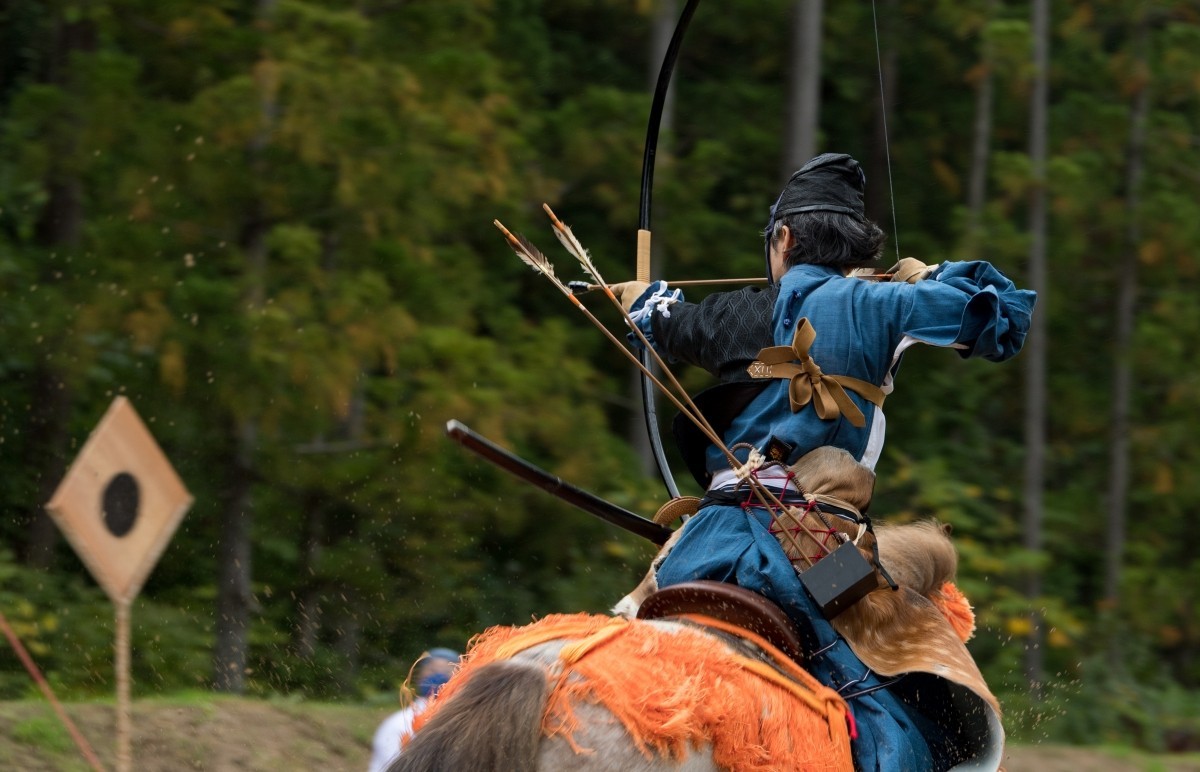
The TV anime "The Elusive Samurai," based on a manga serialized in "Weekly Shonen Jump," has been gaining attention since it began airing in July 2024. You may have already heard about it, as it quickly became a hot topic on social media right after its release. The story focuses on a real historical figure, Hojo Tokiyuki (?-1353 *1). For those familiar with Japanese history, the name "Hojo" might immediately ring a bell, leading to the assumption that Tokiyuki must have been a prominent figure during the Kamakura or Sengoku periods. However, knowing exactly what he accomplished in his life is a bit trickier. Few could instantly point out that he was the one who led the Nakasendai Rebellion.
In this article, we’ll dive into the life of Hojo Tokiyuki, exploring the surviving historical records that document his journey through history.
👉Hojo Tokiyuki: The Life and Death of main character of "The Elusive Samurai"
📚Read the manga 'Nige Jouzu no Wakagimi' and purchase related goods.(Yahoo!shopping)
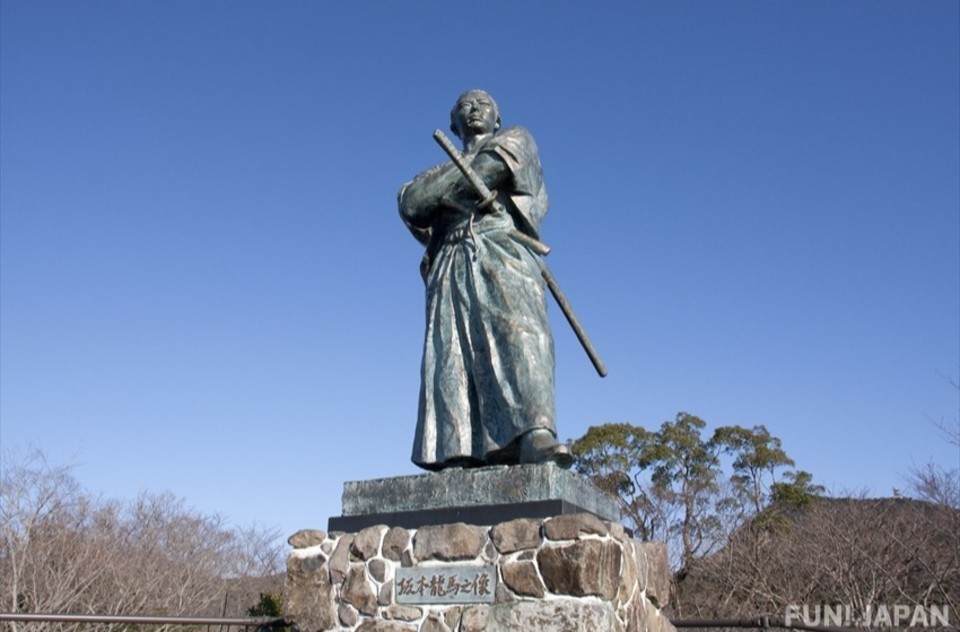
Comments